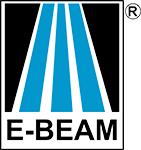What can I expect from E-BEAM as a company?
Let me tell you a story. In June of 2013, I was standing in our booth at the MD&M show in Philadelphia when I turned to face a stately looking gentleman holding some sort of medical device in his hand. He was shaking his head, saying “you sterilization guys have a history of horrible service.” […]
What is the cost to determine whether e-beam can sterilize my medical device?
In order to determine if the necessary sterilization dose is delivered into a case of your product, we first need to perform a dose distribution (dose map) study. This study takes a measurement of the internal doses throughout a case of product. The case of product is opened by E-BEAM Services, and our trained […]
What is the cost for electron beam crosslinking plastic parts?
Polymer crosslinking or modification via e-beam is used for a wide variety of applications such as wire, cable, tubing, sheet products, resin pellets, and discrete parts. Each of these products has its own considerations from size, handling characteristics, dose requirements, and cooling requirements making electron beam throughput and pricing fairly complicated. To try to have […]
What kind of delivery or turnaround can I expect from E-BEAM Services?
What you can expect from E-BEAM Services is better than 98% on time delivery. This is measured against our commitments to our customers, tracked and documented each month with a rolling twelve month tabulation.
What is the price of electron beam radiation sterilization, and how does that compare to gamma?
That question is usually answered with a generic “it depends,” but today I’m going to do my best to give you a useful answer, and to identify the key factors on which “it depends.” Hopefully by the end of this blog you’ll be able to make a pretty good estimate of the pricing your product […]
How does an electron beam accelerator work?
There are several different methods to accelerate electrons to form a beam. The accelerators used by E-BEAM Services are direct current, which provide a continuous versus a pulsed beam. As an example, our accelerators operate in the same way as a traditional cathode ray television set.
What factors affect the price of e-beam crosslinking of cable jacketing?
To answer this question we have to discuss some of the practical considerations in the e-beam irradiation process. In general, the cost associated with the processing of cable is time—the time it takes to process a reel and the time it takes to splice or change over to the next reel.
How do I develop a new electron beamed crosslinkable cable jacketing compound?
Compound formulations are best developed by those with the experience with such chemistry, such as specialists like AlphaGary, Gendon, Inhol, Saco, and others. While E-BEAM Services does not develop compounds, we can definitely help with the testing and product qualification process.
How do I know if my health care product is compatible with e-beam radiation?
Often, the first step in the qualification process is to determine the compatibility of your product with e-beam radiation. Some materials can experience a change in their properties with e-beam, so it is important to ensure the stability of your material and packaging at the beginning of the qualification process. Some initial guidance can be […]
What sizes of cable can be electron beam crosslinked?
E-BEAM Services can process many different cable sizes and constructions. We process thin gauge wire, down to 15 AWG (0.057 inch diameter), but also large cables over 2 inches in diameter. The thickness of the cable jacketing is also important to consider.
